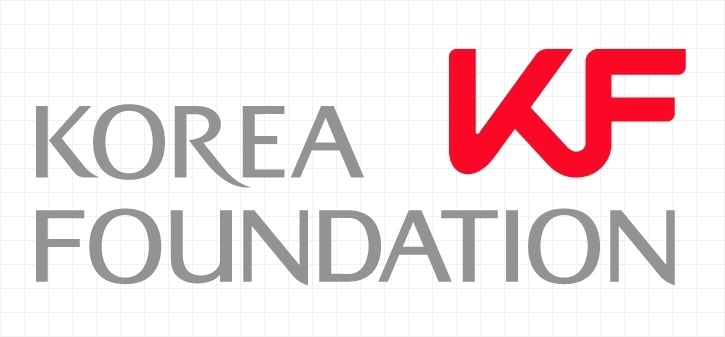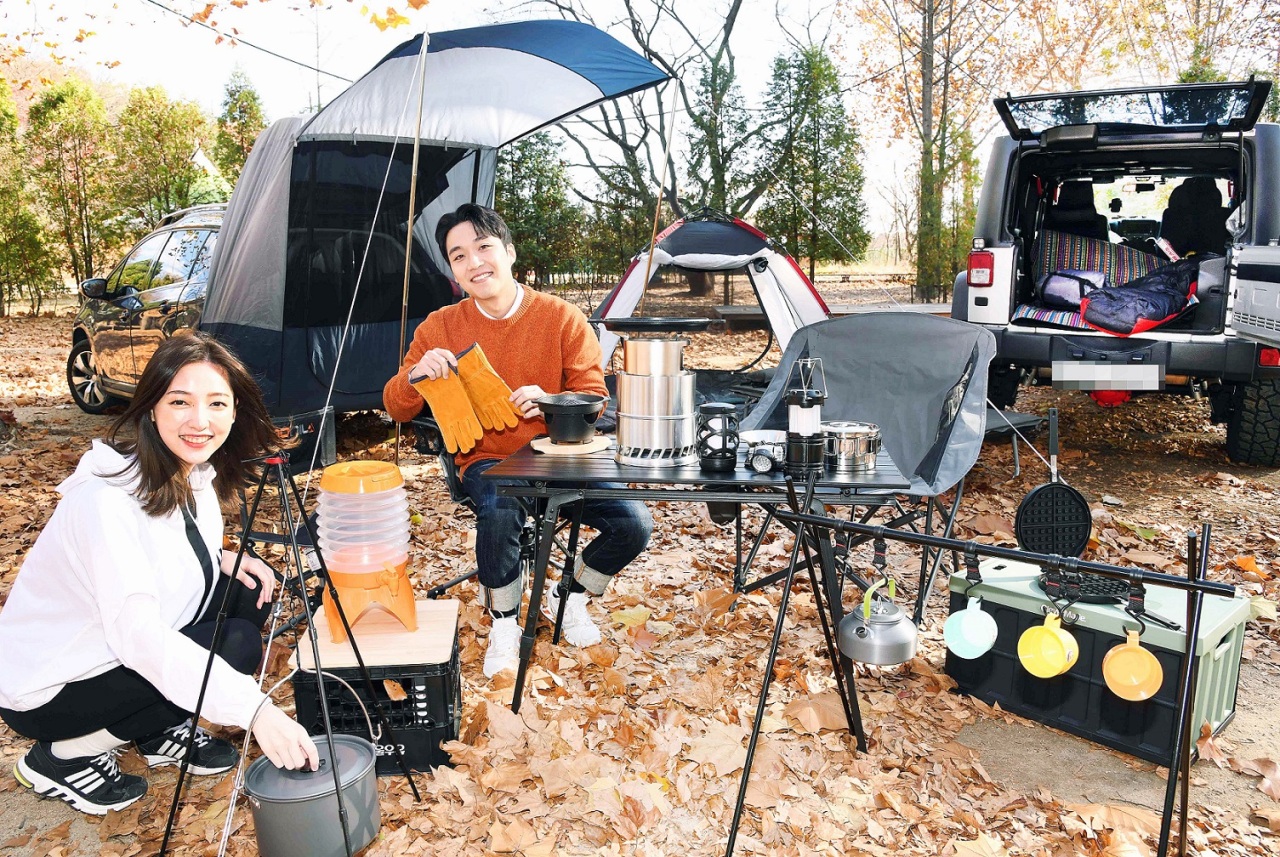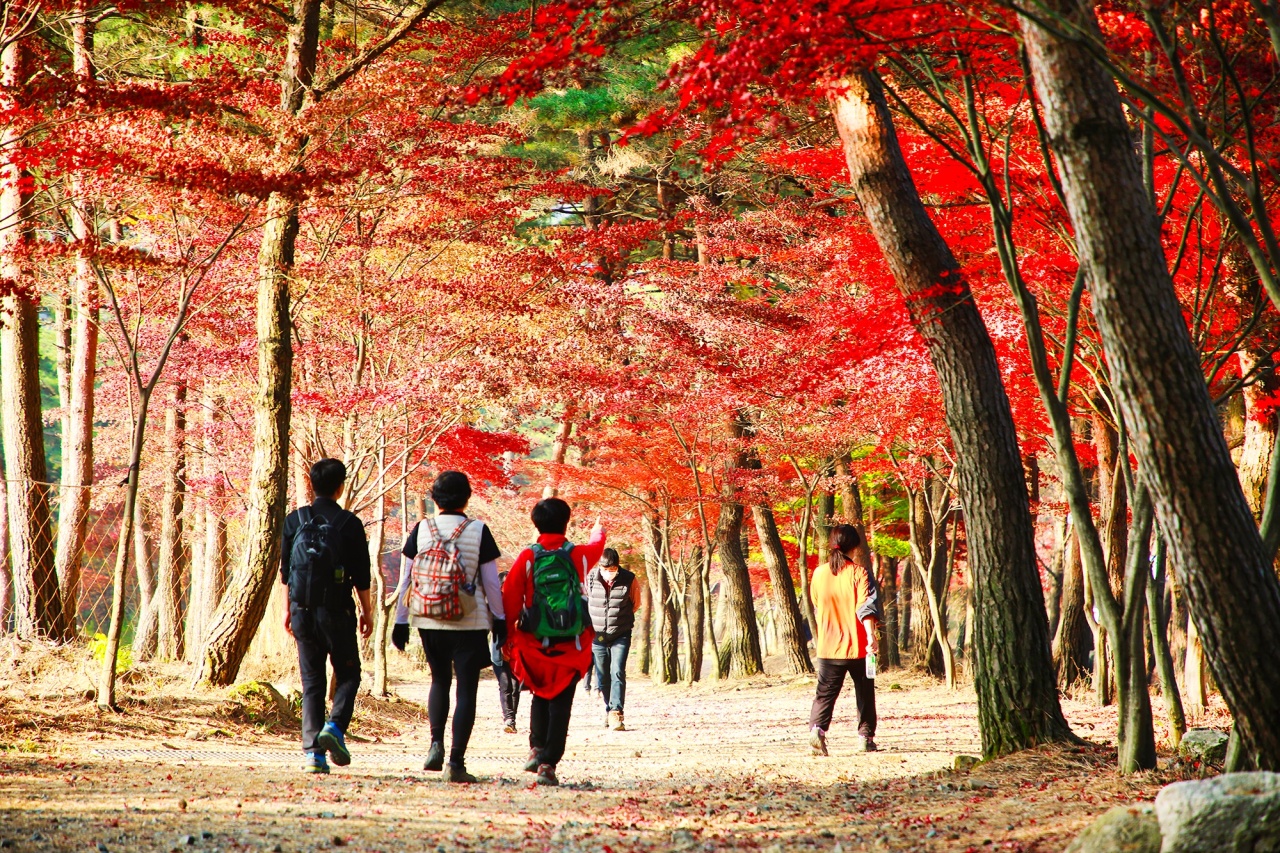In a year that has witnessed the COVID-19 pandemic disrupt lives and devastate economies around the world, South Korea is seeking innovations to meet the challenges it presents.
The following is the third article in a four-part series on how Korea is creating a new normal during the pandemic, produced in partnership with The Korea Foundation -- Ed.
The following is the third article in a four-part series on how Korea is creating a new normal during the pandemic, produced in partnership with The Korea Foundation -- Ed.

28,714,247.
That’s the number of number of South Koreans who traveled abroad last year, according to the Korea Tourism Organization. Due to the COVID-19 pandemic, the number of Koreans traveling abroad since March has dropped more than 95 percent compared with previous years.
Although the pandemic locked up international skyways, it could not stop people’s desire to travel.
People searched for virus-free destinations in Korea at the start of the year, with Jeju Island and Gangwon Province gaining popularity. In March, when the country was hit by a surge in COVID-19 cases, the number of domestic travelers to Jeju Island dipped to 46 percent of those who traveled to the island in the same period last year. However, the figure bounced back to 96.6 percent in November, year-on-year.
“Although I was worried about the pandemic, I went to Gangneung because I wanted to see the sea in the summer,” said Park Byung-jae from Seoul, who went to Gangneung, Gangwon Province, in August. “I went on a weekday to avoid crowds. The quarantine measures such as taking temperatures and using QR codes were the same. The virus did make me take out the food that I would’ve normally eaten at a restaurant, just to be on the safe side.”
Also, while social distancing rules were below Level 2, people felt safe enough to travel due to the government’s strict quarantine measures.
“When I traveled to Gunsan, North Jeolla Province, the social distancing level wasn’t as high as it is now,” said Kim, who lives in Suwon, Gyeonggi Province. “While I waited nearly two hours to get into a famous noodle restaurant there, everyone in the line wore masks and kept social distance, so I wasn’t too worried.”
People also started traveling domestically in new ways, adjusting to the pandemic times.
One form of travel that grabbed the attention of travelers seeking both safety from the novel coronavirus and the excitement of travel was camping.
While the months from June to August are typically considered the height of camping season, the camping fervor has continued into the colder months this year. E-mart, a large retail store chain, reported a 117.4 percent rise in sales of camping products from Oct. 1-18 compared with the same period last year, with sleeping bag sales rising 82.1 percent and camping mattress sales rising 159 percent.
Furthermore, glamping and car camping became popular as people searched for more comfortable camping options. With glamping, a portmanteau of glamorous and camping, campers stay in resort-like accommodations at campsites.
“The number of reservations this year rose more than 30 percent, which I suspect is due to the pandemic. While only Saturdays were fully booked last year, Fridays and Sundays this year have been fully booked as well,” said an official at Green Mountain Fairway, a glamping service in Pocheon, north of Seoul.

Car camping, or “chabak” in Korean, trended, with a Naver cafe called the “Chabak Camping Club” reaching over 200,000 members as of early December compared with 80,000 members in March. In addition, sales of sport utility vehicles increased 9.5 percent this year until October compared with last year, according to the Korea Automobile Manufacturers Association. The number of people in their 20s getting licenses to drive camping cars is at its highest ever.
The word “bulmeong,” which means to drift off while staring at a fire, also trended on social media.

Another form of travel that saw a renaissance of sorts is hiking.
Before the virus, hiking was seen as an activity enjoyed by the older generation. Hiking trips to national parks were organized events for large groups in chartered buses.
But considering the dangers of group travel, hikers turned to national parks, like Bukhansan and Gyeryongsan, located within city limits or on the outskirts of cities. Also, hiking became popular among millennials, who favored mountains that were accessible from cities and not too difficult to climb.
“National parks that are close to homes and easy to hike got more visitors, while parks outside large cities that people went to in large groups on chartered buses had fewer visitors for the most part,” said an official at the Korea National Park Service.
Similar changes in travel patterns were observed at beaches during the summer season. To avoid crowding, the government implemented a reservation system for beaches this summer. While the total number of beachgoers decreased, the Ministry of Oceans and Fisheries announced that the average number of people visiting smaller beaches increased over 2019.
One other form of travel fit for COVID-19 times is the staycation. Even before COVID-19, staycations were popular in Korea, especially among people in their 20s and 30s. However, the pandemic led many hotels that normally cater to foreign guests to create new promotions to appeal to the domestic market.
Early check-in and late check-out packages that allowed people to stay for up to 30 hours were only the tip of the iceberg. Some hotels that previously had not allowed pets refurnished and allocated floors to accommodate guests who wanted to enjoy staycations with their pets. Also, new honeymoon packages targeted newlyweds unable to travel abroad, and rooms became available for rent during working hours as more people self-quarantined or worked away from the office. Furthermore, as staying alone outside major cities for a month or longer became popular, hotels began offering monthlong packages at discounted prices to reflect the trend.
Pension reservations also increased as people sought safer stays in isolation. According to Yanolja, the largest local reservation app, pension reservations increased 119.5 percent during the Chuseok holidays compared with last year, while hotel reservations rose 110.3 percent.
A major source of outbound travel before COVID-19 was golfing trips, with over 2 million Koreans traveling internationally every year to play golf. Now these travelers are heading to golf courses in Korea, causing demand to skyrocket.
At the same time, the travel industry is suffering from a plunge in the number of inbound foreign travelers. The Korean government has attempted to help the travel industry by issuing travel discount vouchers and changing regulations.
Last month, the government allowed no-destination flights for one year and allowed sales of duty-free products to passengers on those flights.
Also, the Ministry of Culture, Sports and Tourism planned to give out 1 million discount vouchers for stays in Korea, which could have saved recipients up to 40,000 won. However, after giving out more than 550,000 vouchers, it postponed the event indefinitely due to heightened social distancing.
In spite of the rough times, some Korean tour companies have found success by adapting to the trends. Seungwoo Travel, a local tour company, profited this year by focusing on healing tours. Another company, Mister Mansion, increased its revenue fivefold by offering programs for travelers staying alone in the countryside for long periods.
Meanwhile, the public’s desire to travel abroad was reflected in the high numbers of reservations for foreign travel with Very Good Tour, which has begun booking trips for next year. Payments will be refunded should travel be impossible due to the virus.
By Lim Jang-won (ljw@heraldcorp.com)
-
Articles by Lim Jang-won








![[KH Explains] How should Korea adjust its trade defenses against Chinese EVs?](http://res.heraldm.com/phpwas/restmb_idxmake.php?idx=644&simg=/content/image/2024/04/15/20240415050562_0.jpg&u=20240415144419)











![[Today’s K-pop] Stray Kids to return soon: report](http://res.heraldm.com/phpwas/restmb_idxmake.php?idx=642&simg=/content/image/2024/04/16/20240416050713_0.jpg&u=)